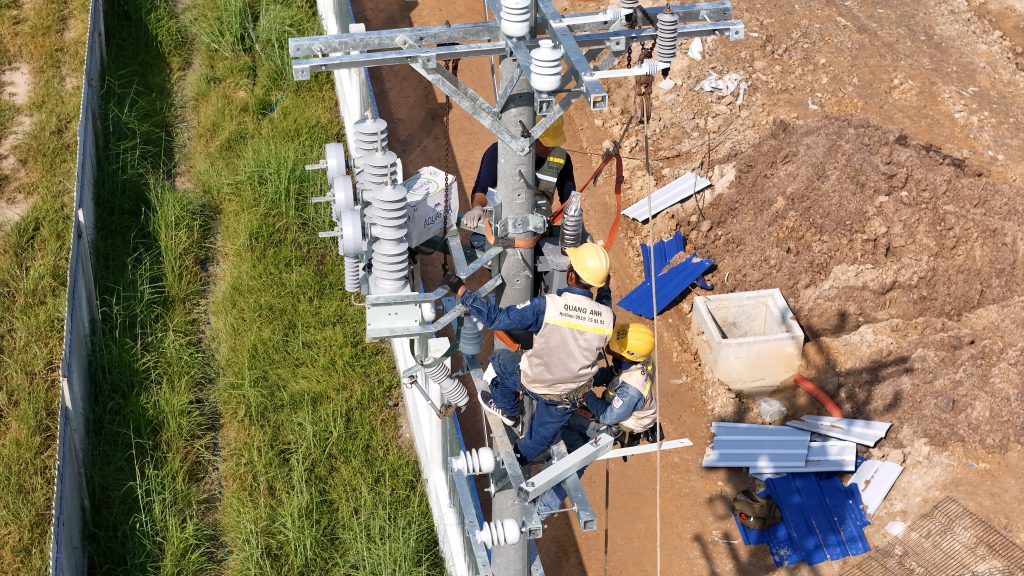News
Turnkey Estimate of 1800MVA 500kV Substation: Scope, 3x600MVA Configuration, Standards and Schedule Management
- Scope of construction and installation for 500kV station.
- Technical configuration 3×600MVA, choosing GIS/AIS and SCADA.
- Typical construction – installation volumes and line connections.
- TCVN/IEC/IEEE standards and applicable benchmarks.
- Technical – legal risks and 18–36 month schedule management.
- Legal documents, commissioning, and maintenance.
The content focuses on a turnkey estimate for a 500kV substation with a total capacity of 1800MVA with a typical configuration of 3 transformers of 600MVA 500/220kV. The scope includes infrastructure construction, installation of transformers, GIS/AIS, SCADA, metering, and auxiliary; line connection, grounding, lighting, fire protection; initial testing and maintenance. Applying TCVN, IEC, IEEE standards; benchmarks from the Ministry of Construction/Ministry of Industry and Trade (refer to Benchmark 36 GXD). Addressing technical risks, schedule 18–36 months, legal (investment policy, EIA, contracts), main/auxiliary equipment, operation – maintenance. Reference ongoing 500kV 1800MVA projects being approved/upgraded in Vietnam such as Long An, Dong Nai, Dak Nong, West Hanoi, Hoa Binh.
Scope of construction and installation for 500kV station.
The turnkey estimate for an 1800MVA 500kV substation encompasses the entire work chain from infrastructure construction to commissioning. The scope includes foundation piles construction, concrete basements, internal roads, control buildings, grounding systems, lighting, and fire protection for the 500kV substation. Installation of 600MVA transformers (500/220kV), GIS or AIS switchgear, substation SCADA systems, metering, and auxiliary equipment. Completing the connection of transmission lines to the substation, organizing trial operations, initial maintenance to ensure stable operation. This content forms the basis for effective estimation of the 500kV substation while meeting current technical – safety requirements.
Comprehensive deployment scope for 500kV station construction and installation
The scope of 500kV substation construction and installation covers the chain of tasks from infrastructure, equipment installation to connection – testing, organized according to industry technical and safety standards.
Civil infrastructure and auxiliary systems
- Constructing foundation piles for main equipment such as large transformers and switchgear clusters (GIS/AIS), ensuring load-bearing and long-term stability of the work [1][4][5][6].
- Pouring concrete foundations according to the technical design, optimizing durability for heavy equipment blocks, limiting vibration and axial misalignment during installation in the 500kV substation [1][4][5][6].
- Building internal roads in the station area to serve the safe and continuous transport, installation, and maintenance of equipment [1][4][5][6].
- Constructing operation management buildings, meeting rooms; ensuring centralized technical monitoring and work infrastructure [1][4][5][6].
- Constructing an entire grounding system to control step voltage – touch voltage, protecting people and equipment in case of incidents [1][4][5][6].
- Installing a lighting system for nighttime operation and maintenance, ensuring vision and operational safety [1][4][5][6].
- Implement 500kV substation fire protection including fire extinguishers, automatic fire detection, and selected fire-fighting equipment meeting current safety standards [1][4][5][6].
Installation of main equipment and system configuration
- 600MVA transformer (500/220kV) or larger capacity configuration as required by operation; is the central device for voltage transformation, placed on foundations according to the technical master plan [1][3][5].
- SF6 gas insulated switchgear (500kV GIS equipment) or air-insulated switchgear (AIS) to perform on/off actions according to substation diagrams; GIS/AIS selection based on environmental conditions, technical requirements, and station scale [1][3][5].
- Implement SCADA system station for automatic monitoring – control, supporting operational management, and quick fault identification [1][3][5].
- Supplement the electrical measurement system to monitor transmission flow, serving maintenance work and electric energy business operations [1][3][5].
- Install auxiliary equipment: compensation capacitors, current transformers, voltage transformers, and protective equipment to support stable operation for 500kV substation [1][3][5].
Connection, testing, and trial operation
- Complete the connection of high-voltage transmission lines to the station, ensuring technical requirements for safe – continuous transmission [1][7].
- Conduct tests: insulation pressure, grounding resistance, check the mass of transformer oil (if available) and trial run equipment before putting into operation [1][7].
- Organize trial operation and initial maintenance to promptly identify – handle technical issues, ready for stable exploitation of the 500kV substation [1][7].
Technical and safety requirements throughout the project lifecycle
- Comply with national technical regulations for station construction, IEC 60076 standards for transformers, and current power sector standards [3][4][9].
- Ensure labor safety and fire prevention during construction – operation; integrated 500kV substation fire protection compliance [3][4][9].
- Materials and equipment quality assurance: concrete, steel, silicone steel, insulating oil, insulating paper… quality imports from markets like Japan, Germany, Sweden [3][4][9].
- Choose the station location based on load center calculations to reduce losses due to voltage drop on the line, optimizing operational effectiveness of the 500kV substation [3][4][9].
Turnkey estimate and execution management
The turnkey estimate covers the entire work scope from infrastructure, equipment installation, connection to trial – initial maintenance; serves as a foundation for effective 500kV substation estimation, investment reporting, and execution management [1][3][4][5].

Technical configuration 3×600MVA, choosing GIS/AIS and SCADA.
The turnkey estimate for a 1800MVA 500kV substation applies a typical configuration: 3×600MVA, voltage level 500/220kV, transformers can be oil or dry type depending on project conditions. Choosing 500kV GIS is suitable for limited land areas or harsh environments; AIS is suitable when the area is large and installation conditions allow. The integrated protection – control system is within the substation SCADA supporting remote control, status monitoring, overcurrent protection, overvoltage protection, short circuit protection, and backup. Configuration decisions are vital inputs when planning the 500kV station and organizing heavy equipment construction, transportation.
Existing data scope and application limits
Current search results mainly lead to regulatory design documents from Vietnam Electricity Group for substations at the 220kV–500kV voltage level. These documents provide some basic information about configuration and design standards related to the 500kV substation. However, essential details to make technical decisions for 500kV GIS or 500kV AIS, as well as integrating SCADA IEC 61850 and scope of 500kV Relay Protection, are not provided in the accessed sources.
Content currently lacking sufficient data
- Detailed comparison between 500kV GIS and 500kV AIS technology in the context of a 500kV 1800MVA substation with 3×600MVA configuration.
- Technical analysis regarding acreage conditions, environment, reliability, operation, and maintenance for the 500kV Substation.
- Specific technical specifications for the first schematic and detailed standards according to IEC/IEEE.
- SCADA/DMS system architecture with protocols such as SCADA IEC 61850 and IEC 60870-5-104.
- Information on 500kV Relay Protection (e.g. overcurrent, distance, differential, ground fault, overvoltage).
- Details on transporting – installing 600MVA transformer and construction organization.
- Analysis of busbar configurations applied for 500kV level (double busbar, breaker-and-a-half, ring bus).
- Testing, acceptance, and periodic maintenance requirements.
References needed to complete data set
- Specialized technical documentation from technology providers (to describe and require systems for 500kV GIS, 500kV AIS, and related substation 500kV components).
- International standards IEC/IEEE (including SCADA IEC 61850 deployment guidelines and standards related to protection – control).
- Design guidance from professional units in the field of power systems.
- Study reports from international energy organizations referencing practical implementation and testing framework requirements.
Schematic information requirement collection
- Technology selection criteria: clarify comparison criteria 500kV GIS vs 500kV AIS based on project conditions (acreage, environment, operation – maintenance, reliability).
- Technical scope definition: first schematic, IEC/IEEE standards applied to 500kV Substation.
- Control – protection system architecture: SCADA IEC 61850 model, link protocol, equipment hierarchy, and 500kV Relay Protection functions required.
- Logistics – construction requirements: transportation scope, 600MVA transformer installation and construction organization plan.
- Testing, acceptance, maintenance framework: testing items and periodic maintenance schedule according to standard practices.
Information usage note
The in-depth content listed above has not appeared in the searched documents; specific descriptions and parameters need further referencing from provider technical documents, international standards IEC/IEEE, design guidelines from professional units, and reports from international power organizations as mentioned in search results.
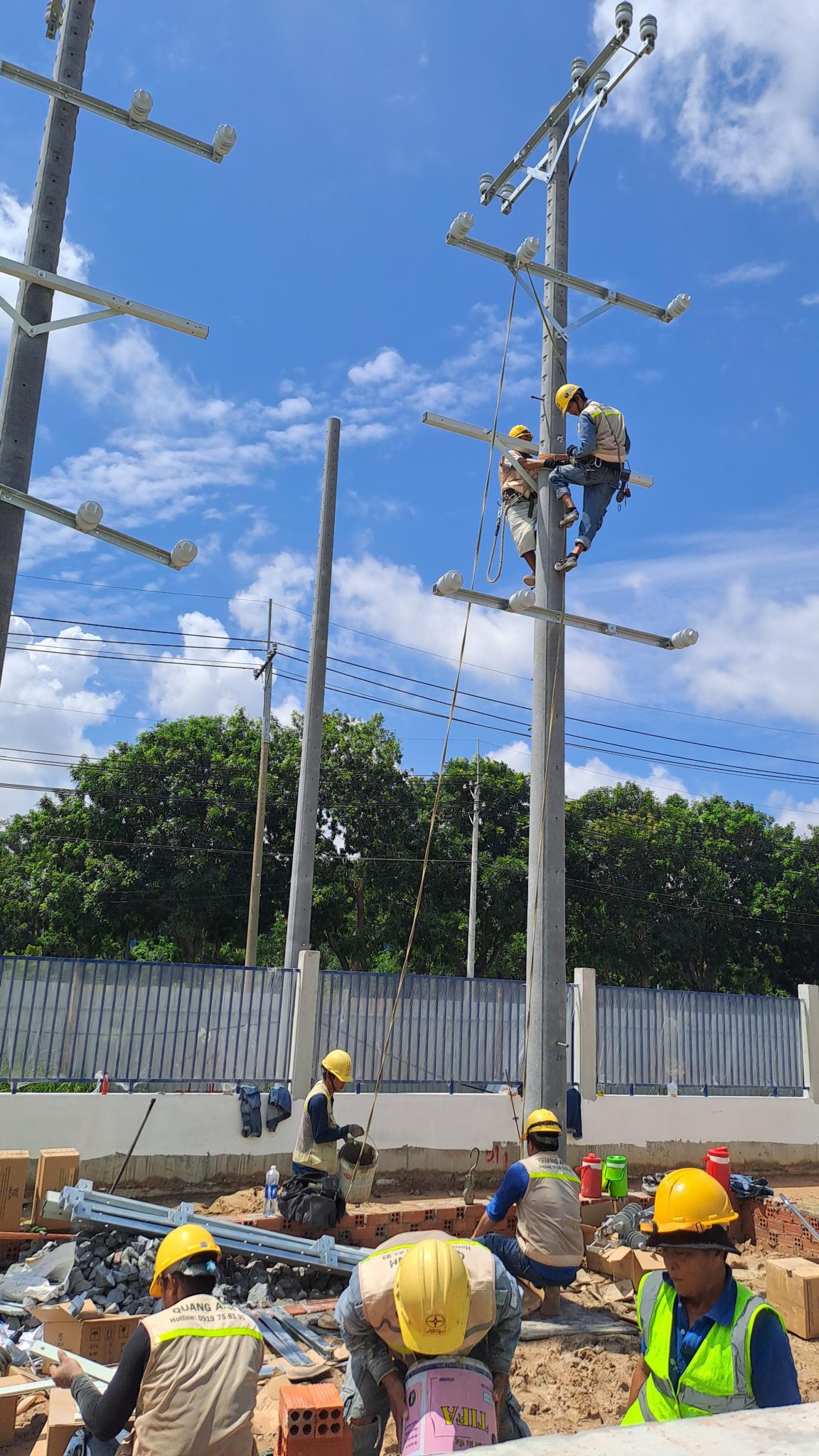
Typical construction – installation volumes and line connections.
A turnkey estimate for the 1800MVA 500kV substation must clearly quantify volumes: foundation piles, concrete bases, internal roads, operating houses, and auxiliary works. The installation of a 600MVA transformer involves large lifting – moving volumes; installation of busbars, device cabinets, switches, circuit breakers, current and voltage transformers for 500kV GIS/AIS. The 500kV double circuit line connection category can have lengths ranging from tens to over 100 km depending on the project, mainly affecting progress and construction organization. These volumes are the basis for resource control in the 500kV station estimate and supply plan.
With a scale of 1800 MVA (usually includes 3 transformers of 600 MVA), 500kV substation requires comprehensive construction organization from foundation – infrastructure, the main installation of equipment GIS 500kV/AIS to 500kV dual-circuit line connections. Accurate quantification of volume and compliance with standards is the foundation for controlling progress, quality, and safety.
Foundation and infrastructure volume
- Substation foundation and concrete base: Large load-bearing reinforced concrete foundations for transformer positions, circuit breakers, isolators, GIS/AIS device cabinets, and poles. Depending on geology conditions, using centrifugal concrete piles or bored piles as per TCXDVN/TCVN applied to 500 kV stations. Concrete bases are about 200–300 mm thick, with steel tie system to withstand heavy equipment loads and vibrations, ensuring long-term durability for the substation foundation .
- Internal transportation roads: Concrete or asphalt roads, 4–6 m wide, appropriate for access to super heavy-lift equipment and cranes. The road structure is designed to carry transformers and support equipment transport loads.
- Operating house and auxiliary works: Standard operating house 100–150 m², either reinforced concrete or prefabricated steel structure. Fully equipped with water systems, backup generator rooms, guardhouses, maintenance equipment storage, arranged in compliance with 500kV substation safety corridors.
- Standards: Applying TCVN 9385:2012 for station design and foundation structure; IEC 61936 for high-pressure station design.
Main equipment installation: 600 MVA transformers and 500kV GIS/AIS
- Installing 600 MVA transformers: Large lift – movement volume, using lifting equipment with a lifting capacity of 100–200 tons or more. Preparing flat foundation surfaces, have equal load distribution solutions, anchor firmly during concrete foundation pouring and position according to the construction drawing. Tight transformer installation monitoring is necessary to protect the device.
- 500kV GIS and AIS:
- Busbars: Use copper or aluminum, insulated by SF6; installed by fixtures with high precision, limiting vibrations, ensuring good electrical contact.
- Equipment cabinets and modules: Module-based transportation/installation; perform airtightness checks, pressure testing; calibrating switchgear, measurement, and protection devices.
- Isolation switches, SF6 circuit breakers, CT/PTs: Installation follows a specific technical process, integrated with control – protection systems. The SF6 environment requires strict compliance with electrical safety and fire prevention.
For the 500kV GIS cluster, airtight acceptance, pressure testing, and operation calibration are mandatory milestones before synchronizing with the control – protection system of the 500kV substation . These items are directly correlated with foundation completion progress and transformer installation actions.
500kV dual circuit connection
- Size and construction organization: Line length from tens to over 100 km, requiring synchronous organization among sections to meet grid connection milestones of the 500kV line with the station. The overall plan prioritizes pole foundation, then pole erection and wire stretching in sequence.
- Pole foundation: Accurate construction of size and location; avoid pole foundation delays to not affect pole transport and erection, ensuring the rhythm of double-circuit construction.
- Conductors: Using large-section ACSR, e.g., ACSR-795 or higher, depending on the transmission capacity of the 500kV line .
- Wire stretching and safety: Use specialized equipment to control tension and sag; comply with safety standards throughout the stretching – anchoring process, and synchronize progress with station equipment installation.
- Progress influencing factors: Terrain, climate, construction capability, and coordination level. Be prepared with contingency plans to handle inconveniences, strengthen quality management, and labor safety to limit disruption on the 500kV line path.
- Applicable standards: QCVN 04:2009/BXD for high-voltage line works; TCVN 4742:2012 for power line design; IEC 60865 for 500 kV line works; comply with safety regulations of the Northern/Southern Power Corporation for the 500kV double-circuit line.
Reference practice and inspection
- Operating – constructing GIS 500 kV station procedures at projects like Ialy expansion, Lai Chau: focusing on switching, isolation switches, GIS drive cabinets, and airtightness testing.
- Model of optimal double-circuit band construction: no pole foundation delays, organize supply – erection rhythmically.
- Testing – calibrating materials, devices for the 500 kV substation and line at specialized power testing centers.
- Application of reinforced concrete foundation design guidelines for the 500 kV station in the 110–500 kV grid design document of EVN.
On the whole, the synchronized implementation of foundations – infrastructure, transformer installation, and 500kV GIS/AIS clusters, together with 500kV line dual-circuit connection work in line with standards is the key to ensuring quality and timeline for the 500kV substation.
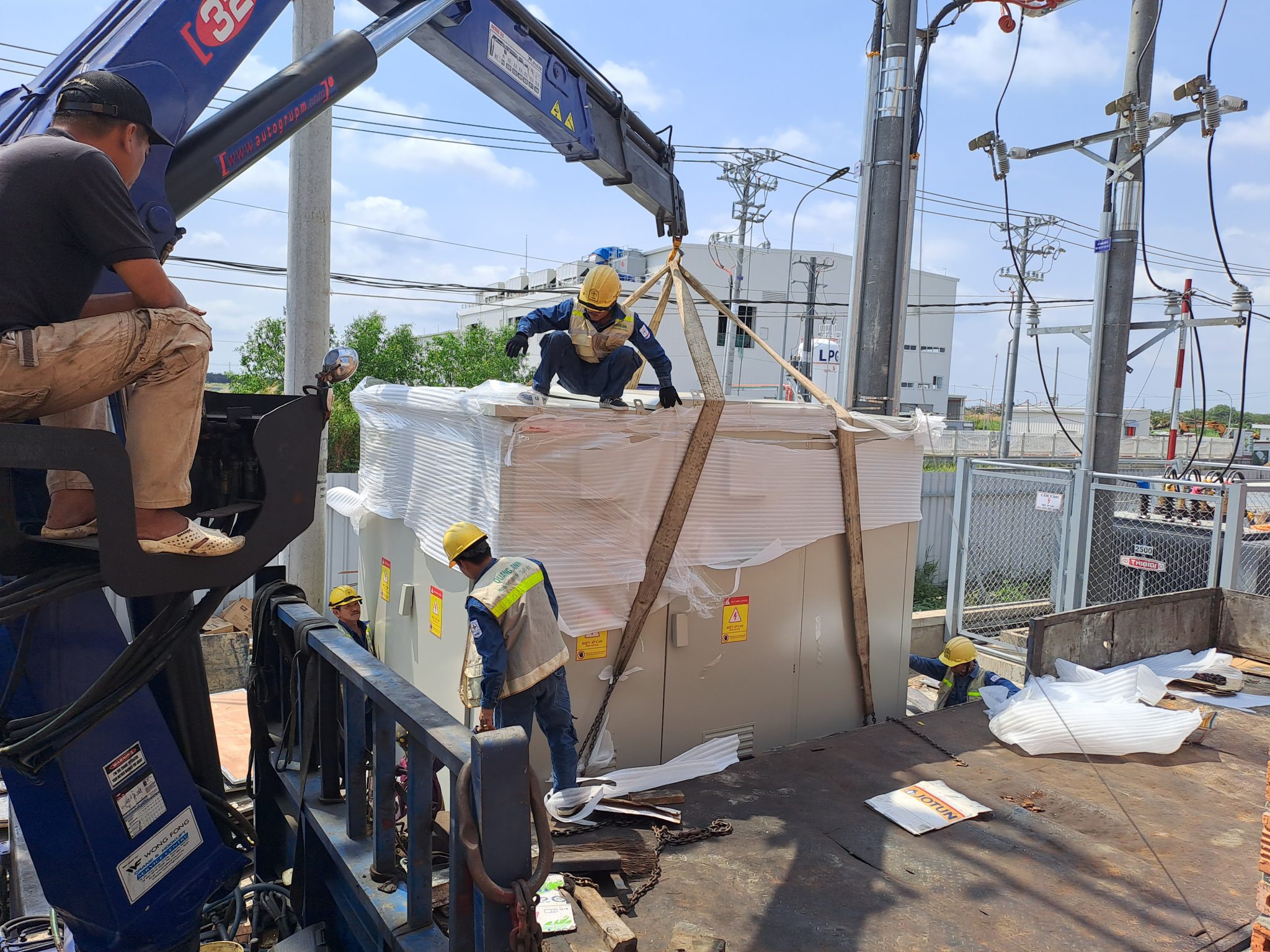
TCVN/IEC/IEEE standards and applicable benchmarks.
A turnkey estimate for the 1800MVA 500kV substation complies with the TCVN, IEC, IEEE systems for design, installation, operation. Labor, material, construction machinery benchmarks according to the Ministry of Construction and Ministry of Industry and Trade regulations; Benchmark 36 by GXD may be referred for 500kV substation installation. The quality of 600MVA transformers, 500kV GIS, and substation SCADA systems must comply with EVN and Vietnamese law. This standardization ensures legal compliance and serves as a quality – quantity control basis in the 500kV station estimate.
Application scope in the 500kV station estimation
The application content focuses on turnkey estimation for substations with a capacity of 1800MVA at the 500kV voltage level, requiring consistent compliance from the design, installation to operation stages. The goal is to ensure that all items within the station scope adhere to the current standard and benchmark system to meet legal requirements and technical uniformity.
Technical standards system
The standards system includes TCVN along with international standards IEC and IEEE. These standards are used uniformly for the entire station lifecycle: from describing technical requirements in design, implementing and installing construction to operational requirements. Simultaneously applying TCVN/IEC/IEEE allows synchronization of technical indicators of equipment and systems, creating a foundation for planning estimates and controlling items within a unified standard.
Cost benchmarks as per management agency
Labor, material, and construction machinery benchmarks are used according to the Ministry of Construction and Ministry of Industry and Trade regulations. These benchmarks serve as a basis to build, control, and review cost items in turnkey estimates. For 500kV substation installation work, Benchmark 36 by GXD can be referenced as a suitable reference source with the characteristics of work scope at this voltage level.
Equipment and quality requirements
The three main equipment groups at the station must meet quality requirements according to EVN and Vietnamese law, including: 600MVA transformers, 500kV GIS systems, and substation SCADA systems. Applying this quality requirement ensures technical suitability for the equipment and simultaneously serves as a compliance inspection basis in the estimates and execution process.
Standardization for legal management and control
Uniform application of TCVN/IEC/IEEE along with state management agency benchmarks helps systematize the entire legal basis of the 500kV station estimate. Thus, quality and quantity control in the estimate is implemented on the same platform, supporting monitoring, tracking, and risk management when deployed. This approach ensures the items within the substation’s scope are quantified and controlled in accordance with current legal requirements.

Technical – legal risks and 18–36 month schedule management.
A turnkey estimate for an 1800MVA 500kV substation must anticipate risks in installing heavy load transformers and complex GIS, along with schedule risks from licensing, design adjustments, acceptance. Weather factors, occupational safety, and technology/equipment import disparities can impact plans. Legally, it must comply with land, environmental requirements, and investment approval. The overall schedule is typically 18–36 months including design, approval, heavy equipment transportation, foundation construction, installation, testing, and handover; schedule heavily relies on land procedures and equipment supply contracts, requiring strict risk management in the 500kV station estimate.
18–36 month schedule framework and key control points
- Design and investment approval (3–6 months): Complete investment documents, feasibility study reports, appraisal; implement basic, technical, and construction drawing designs. This phase lays the foundation for 500kV substation construction progress and optimizes project risk management.
- Site preparation and licensing (3–6 months): Land clearance, land acquisition, legal land handling; apply for construction, environmental, fire safety, and labor safety permits for 500kV substation .
- Transporting heavy equipment (2–4 months): Conducting transport flow of 1800MVA transformers, 500kV GIS, and main equipment; control of traffic infrastructure, road, and lifting methods.
- Foundation construction and assembly (6–12 months): Foundation excavation, concrete pouring, earthing system installation, station building construction; install transformers, GIS, control, protection, and SCADA systems for the 500kV substation.
- Testing, acceptance, handover (2–4 months): Organize testing, quality inspection, acceptance according to standards; operational handover and finalize legal documents.
Major technical risk groups
Installation and operation of 1800MVA transformer
- Transporting and lifting heavy equipment: Hundreds of tonnes require appropriate transport routes, specialized cranes, and high technical personnel; errors may cause damage when placing the transformer.
- Overload, overheating, explosion: Design or operation errors leading to overheating, insulation degradation, oil combustion, and explosion risk.
- Insulation breakdown: Material aging due to high temperatures and continuous operation reduces insulation system lifespan.
- Partial discharges: Arcing, circuit shorts can generate toxic gases, threaten safety, and propagate to nearby equipment.
Installation of 500kV GIS
- SF6 gas leakage: Environmental impact, reducing insulation capability, and health effects if not controlled.
- Sealing and installation accuracy: High airtightness requirements; easy installation errors lead to short circuits, discharges.
- Maintenance, periodic checks: Specialized equipment and well-trained crews are needed to ensure stable 500kV GIS operation.
Technology/equipment import discrepancy
- System compatibility: Imported equipment may not be synchronized with existing configurations, creating design adjustment and complex integration requirements.
- Supplier dependency: Risk of delivery delays, parts shortage, limited technical support directly affecting 500kV substation construction progress.
- Warranty – maintenance: When warranty expires, repair, replacement might face difficulties.
Legal and management risks
Licensing and investment approval
- Extended time: Administrative procedures and policy changes may prolong approval process, affecting project risk management workflow.
- Regulatory plan/legal changes: Investment or environmental policy adjustments compel the plan to update.
Drawing adjustment and acceptance
- Design change generation: Due to actual conditions, technology requirements or managerial bodies.
- Acceptance difficulties: Risk of missing documents, unmet technical standards, or construction defect discoveries.
Land and environment
- Land clearance: Challenges in land acquisition, compensation, disputes delaying 500kV substation construction progress.
- Environmental and safety requirements: Compliance for waste treatment, noise, emissions; meet fire safety and labor safety for 500kV substation.
Schedule and project risk management requirements
Weather and labor safety
- Storms, floods: Affecting foundation excavation, equipment transportation, outdoor installation.
- Heat, drought: Impact on concrete quality and site safety.
- Accidents and skilled labor shortages: Heavy equipment installations, working at heights, high voltage exposure; peak periods lacking skilled engineers, workers.
Land and equipment contract dependency
- Delayed land clearance: Pushing back construction items.
- Delayed equipment delivery: Direct impact on installation, trial run, and 500kV substation acceptance.
Cost – quality – contingency control
- Large-scale estimate: Requires synchronized control of costs, schedule, quality for projects using 1800MVA transformers and 500kV GIS.
- Contingency plans: Preparing scenarios for delays, cost increases, or technical incidents – focus of project risk management.
Given scope, complexity, and stringent compliance requirements, early recognition of technical risks for the 1800MVA transformer and 500kV GIS, along with legal – procedural risks, form the foundation to coordinate 500kV substation construction progress within the 18–36 month framework proactively for 500kV substations .
References
- https://thicongtrambienap.com/risks-of-using-small-substation-for-large-plant/
- https://eemc.com.vn/500kv-transformer-issue-in-china-central-region-power-outage.html
- https://www.npt.com.vn/d6/en-US/news/No-impact-on-500-kV-Northern-Southern-transmission-system-from-Hiep-Hoa-MBA-500-kV-incident–6-192-1388
- http://evni.vn/project/500kv-substation
- https://baomoi.com/advance-in-technology-application-and-operation-management-of-transmission-grid-over-waterway-50653292.epi
- https://www.npt.com.vn/d6/en-US/news/Dak-Nong-500kv-transformer-substation-upgraded-to-1800MVA-0-194-10060
- https://baochinhphu.vn/efforts-to-deliver-500-kv-quang-tri-substation-and-connecting-line-on-time-10225102714400649.htm
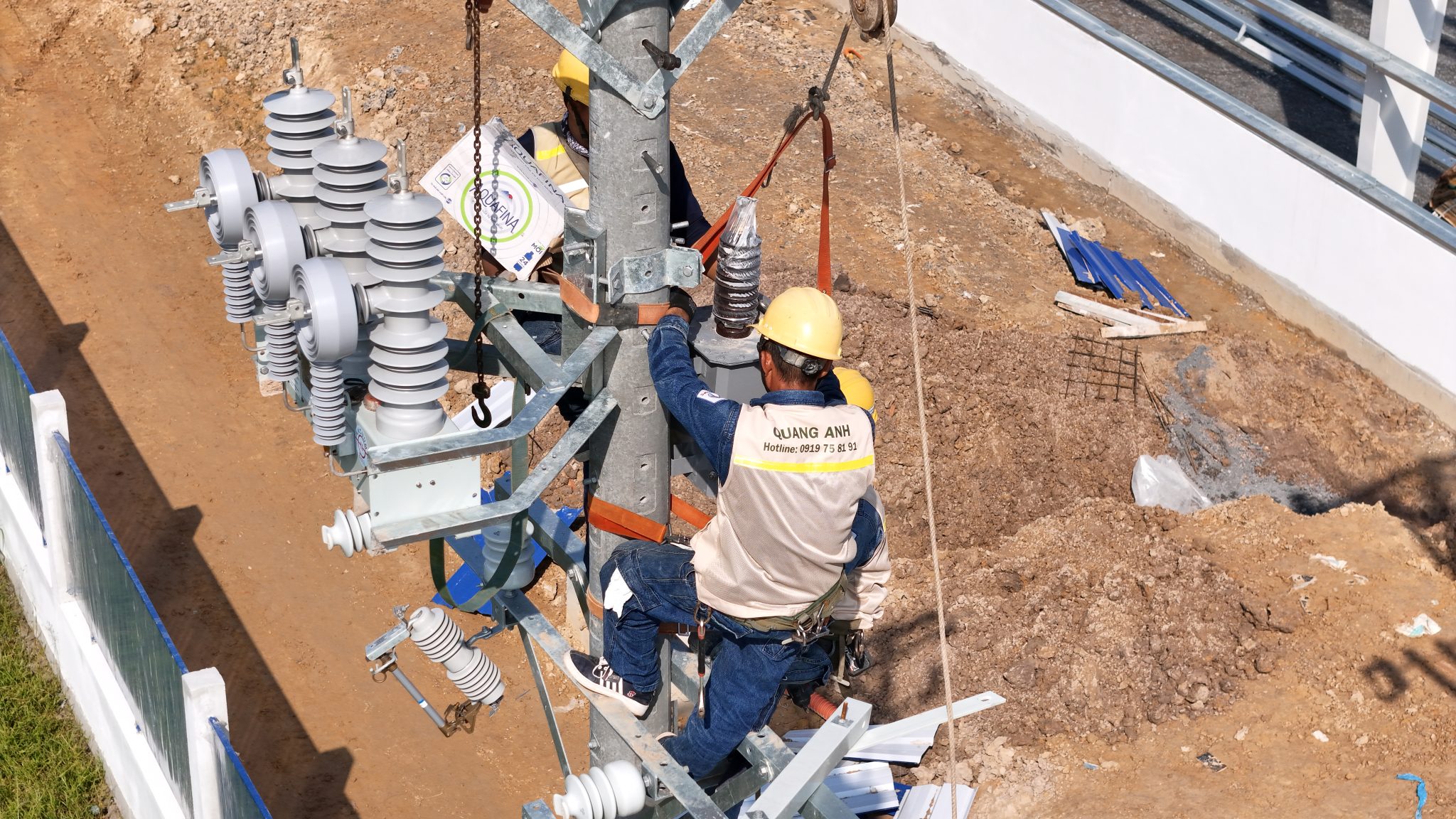
Legal documents, commissioning, and maintenance.
A turnkey estimate for an 1800MVA 500kV substation must attach a legal dossier: investment policy approval from the locality (e.g., Long An, Dong Nai), construction permits, environmental impact assessments, and labor safety; power purchase agreements, equipment supply, construction contracts; investment efficiency reports, compliance with land and project management laws of EVN/Ministry of Industry and Trade. The operation – maintenance phase includes operating the substation SCADA on-site or from the center, regular checks of circuit breakers, 600MVA transformers, sensors, cooling, and grounding systems; performing preventive maintenance, planned repairs, and training personnel for incident resolution.
Legal framework and investment preparation
The scope of substation legal work for an 1800 MVA scale at a 500kV station level follows a three-level mechanism (Central, local, ministry/department). Implementation reality is emphasized by the Prime Minister inspecting the progress of the Thanh Hoa 500 kV substation project on 22/06/2024 to ensure on-schedule energization, illustrating the strategic significance of these voltage-level works in dry season energy security [3].
Legal documents and initiation procedures
- Legal entity documents: business license/company registration certificate, tax code, legal representative citizen/passport ID; land use rights/lease contract. Minimum three notarized copies, valid for within three months [1].
- Electricity purchase proposal: submit to local Electricity or EVN Business Department, along with documents determining location and electricity use purpose at the 500kV station construction site [1].
- Connection proposal dossier per Ministry of Industry and Trade: proposal application (with file), principle diagram after connection point, technical documentation (600 MVA transformer, 500 kV circuit breaker, protection system), expected progress, technical – economic data [2].
- Coordinate with managing agencies: agreement to align with power development planning (Industry and Trade Department), agreement on pole/station location and line corridor (Planning – Architecture/Transport/Construction Department), construction permit for power works according to provincial/city People’s Committee decentralization [2].
- Environment: prepare EIA Report and environmental protection plan, submit to district/commune People’s Committee, Industrial Park/Export Zone/Economic Zone Management Board for confirmation as authorized [2].
- Contracts: sign power purchase agreements with EVN/local electricity, equipment supply contracts (600 MVA transformer, 500 kV circuit breaker, control – protection), and construction contracts [1][2].
- Land and infrastructure: comply with Land Law, land clearance, road excavation permits if involving underground/infrastructural works [1].
- Labor safety: develop and implement safety plans for construction, operation, maintenance per current regulations.
Testing, protection integration, and station SCADA
Testing pathways layered from the factory to the field, then to control – protection and communications integration.
FAT/SAT and nominal testing
- Factory Acceptance Test (FAT): 600 MVA transformers load check, AC characteristics, loss, noise; 500 kV circuit breaker operational mechanisms, swirling cut capacity inspection.
- Site Acceptance Test (SAT): overall acceptance for installed work items, including electrical equipment, control, and protection systems.
- Nominal testing (Type Test) with certificates from specialized labs: overvoltage capability, short circuit resistance, insulation, efficiency – loss.
Protection – control synchronization
600 MVA transformers in a total capacity of 1800 MVA require tight synchronization among:
- Transformer protection relays (foreign protection, internal protection),
- Line protection (overload, short circuit), overvoltage protection,
- Remote relay settings serving flexible protection reconfiguration [4].
SCADA/EMS configuration and remote control
- Station SCADA: sensor data collection (temperature, pressure, current, voltage), remote device control (circuit breakers, load shedding), exceeding threshold alerts, storing historical data for analysis – reporting.
- Integrated EMS: power flow management, operational optimization, demand forecasting, and recommendation outputs.
- On-site operation mode: manual operations, use of local signalization, manual recording of parameters in the early stages.
- Shift to remote control: applying IEC 61850 for station electrical communication integration to unify control – protection – measurement, reduce wires, increase reliability and response speed; using 60870-5-104 protocol for communication between station and dispatch center, supporting control commands, transmitting status/measurement data, and quick alarm processing [4].
Industrial network security
- Establish firewalls to protect station SCADA networks from unauthorized access.
- Encrypt transmitted data, authenticate users, conduct regular inspections and update anti-malware software.
Transformer, breaker, and auxiliary system maintenance
A strategy of combining periodic – preventive – planned repair maintenance optimizes 500kV station availability.
500 kV Circuit Breaker (SF6)
- Weekly: check SF6 gas pressure, operational mechanism status; record remote control parameters.
- Monthly: trial protection – automation runs, check UPS and communication devices.
- Annually: open and inspect operational mechanisms, clean, replace worn parts (certificates, springs), re-tighten connections, and recalibrate parameters.
600 MVA Transformers
- Daily: monitor oil temperature with a shell thermometer (≤ 65°C normal; ≤ 75°C overload), main tank/auxiliary oil level, fan cooling operation, oil leaks; record statistics.
- Monthly: inspect externals, wire terminal connections, automatic oil sampling equipment, protective devices (pressure relief valve, temperature alarm).
- Annually: take oil samples for dielectric testing; measure insulation resistance of windings (megohm meter), test transformer turns ratio (TTR), oil acidity level, moisture content.
- Every 3–5 years: FRA (Frequency Response Analysis) deep coil inspection; open and inspect interior when necessary.
Sensors – measurement
- Temperature sensor: quarterly checks, replacement if deviation > 1°C or malfunction.
- CT: annual insulation and accuracy check.
- VT: annual insulation and transformer ratio checks.
Cooling system
- Cooling fans: daily operation checks; quarterly bearing checks; lubrication as recommended; motor replacement if faulty.
- Air coolers: clean heat exchange surfaces every 6 months; check water pipes (if any) to ensure flow.
Earthing system
- Annually: measure grounding resistance (typically < 1 Ω for a 500 kV station), check rust prevention, secure terminals, recondition connections if needed.
- Every 3–5 years: dig and check details, improve if values do not meet requirements.
Routine testing
- Oil dielectric: electrical strength ≥ 30 kV; acid number < 0.3 mgKOH/g; moisture content < 50 ppm.
- DGA (dissolved gas analysis): annual analysis of H₂, O₂, N₂, CH₄, C₂H₆, C₂H₄, C₂H₂ or when abnormalities are detected.
- Partial discharges (PD): Conducted annually or every 3 years to detect early insulation degradation.
Preventive maintenance and scheduled repair
- Preventive maintenance: replacement per manufacturer lifetime/recommendations, based on operational – maintenance history and test results (e.g., breaker certificates after 10–15 years or 100,000–200,000 switch operations).
- Major transformer repair (10–15 years/lifetime): dismantle, inspect coil/core/yoke, repair – replace, clean, oil drying, reassemble and test.
- Circuit breaker repair (10 years/lifetime or after 100,000–200,000 operations): disassemble, clean, replace SF6 if purity not achieved, replace contact certificates when failed, adjust parameters.
Spare parts – training – incident handling
- Spare parts: 500 kV circuit breaker contact certificates, operational springs, fan bearings, oil filters, transformer oil compensatory, control – protection electronics components; warehouse management by detailed records, periodical inventory, ensuring storage conditions and discarding expired materials.
- Training: initially (equipment knowledge – safety – maintenance procedures – basic incident handling), annually (regulations update, practice, checks), specialty (DGA, FRA, PD, SCADA/EMS, network security).
- Incident handling: with transformers (overheating – cooling checks; oil leaks – suspend operation, repair; PD – detailed testing and threshold evaluation), with circuit breakers (cannot open/close – check power supply and mechanism, manual operation if needed; gas leaks – check shell, possible replacement), with SCADA/remote control (shift to local, network – communication equipment checks, restore from backup).
The strict substation legal foundation, IEC 61850 and 60870-5-104 standard testing – integration pathway along with the transformer, circuit breaker, and auxiliary systems maintenance program ensure safety – reliability – efficiency for the 500kV station throughout the project lifecycle [1][2][3][4].
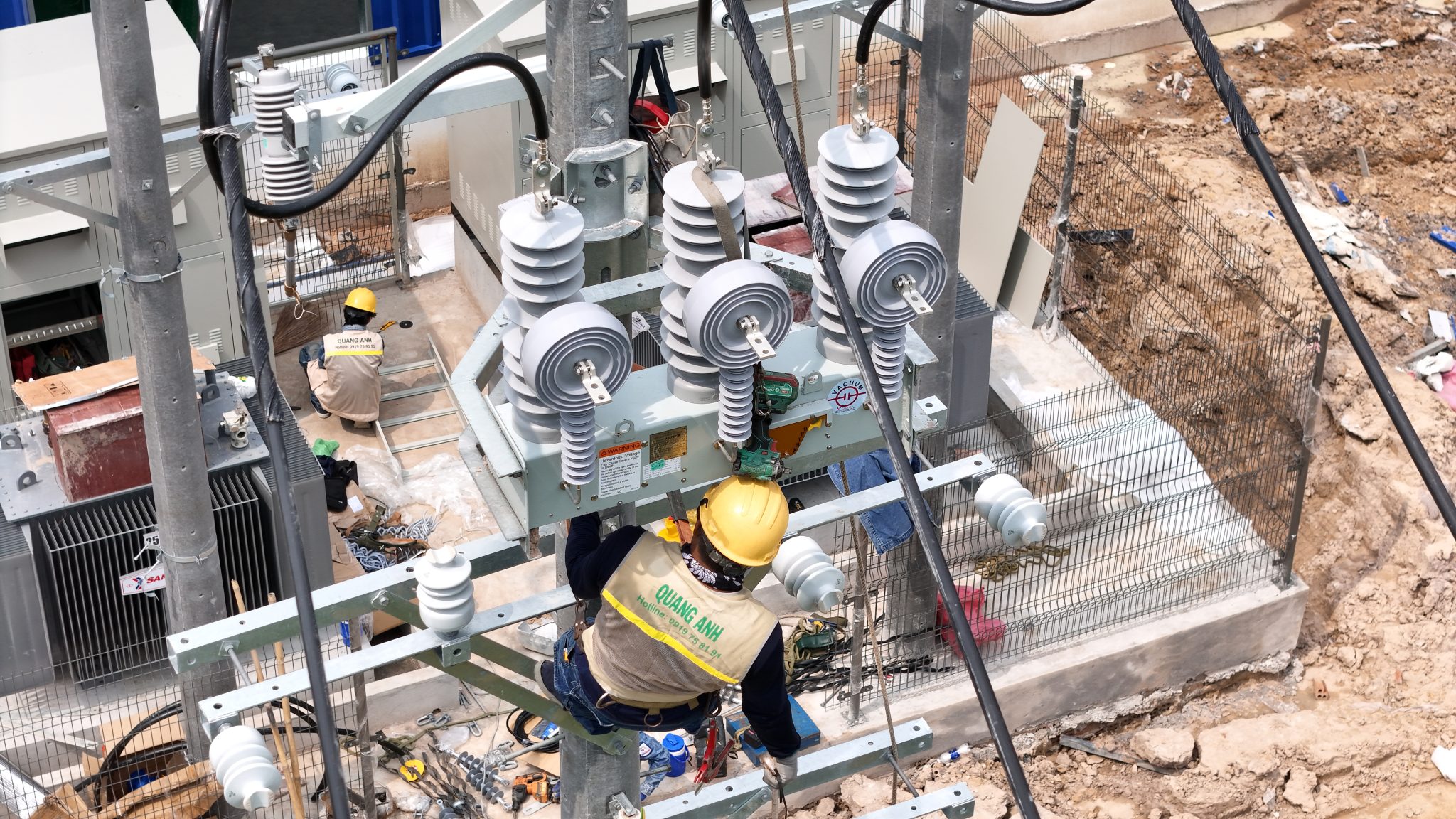
The turnkey estimate for an 1800MVA 500kV substation helps unify construction scope, 3×600MVA configuration, GIS/AIS and SCADA selection, adhere closely to TCVN/IEC/IEEE and benchmark standards. This approach reduces technical – legal risks, controls the 18–36 month schedule, and ensures operational – maintenance readiness. It forms the foundation to optimize investment efficiency and meet the 500kV grid connection requirements.
Contact to implement the 1800MVA 500kV substation turnkey estimate according to project standards and schedule. QuangAnhcons – Hotline: +84 9 1975 8191.
QuangAnhcons provides the service of establishing and implementing the 1800MVA 500kV substation turnkey estimate according to the mentioned scope: infrastructure construction, 600MVA transformer installation, GIS/AIS, SCADA, line connection, trial – initial maintenance. The service complies with TCVN/IEC/IEEE, benchmarks from the Ministry of Construction/Ministry of Industry and Trade (refer to Benchmark 36 GXD), technical – legal risk management, and an 18–36 month schedule plan, meeting legal documents and operational station requirements.

 Tiếng Việt
Tiếng Việt 简体中文
简体中文 Deutsch
Deutsch 日本語
日本語 한국어
한국어 ไทย
ไทย Русский
Русский Français
Français
